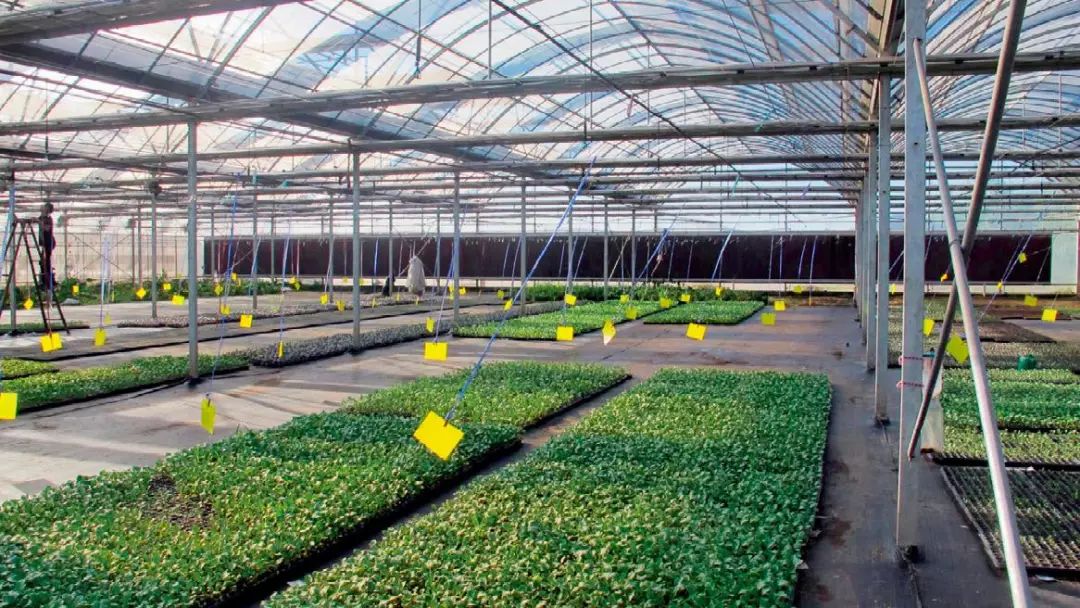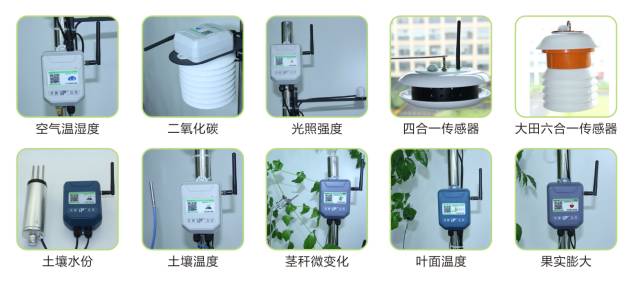As one of the strategic emerging industries integrating new generation information technology, the Internet of Things has received much attention. Agriculture is one of the key application areas of Internet of Things technology, and it is also the field with the most urgent, difficult and integrated features of IoT technology.
In recent years, Internet of Things technology has been applied to many fields of agriculture, including agricultural environmental monitoring, greenhouse greenhouse production control, water-saving irrigation, meteorological monitoring, product safety and traceability, and equipment intelligent diagnosis and management.
For the application of Internet of Things technology in agriculture, the basic technology is the perfection of sensor networks. The perfection of the sensing system directly affects the operation of the entire agricultural IoT technology.

The agricultural Internet of Things consists of a sensing layer, a transport layer, and a processing layer. The data information collected by the sensing layer sensor technology, bar code technology, global positioning technology, etc. is transmitted to the processing layer for agricultural prediction, diagnosis, control, decision making and early warning, etc. through the wired, wireless sensor network technology and mobile communication technology of the transmission layer. .
First, the key technology
1. Agricultural Internet of Things Awareness Technology
The sensing layer mainly includes various sensor and node technologies, global positioning system technology and bar code technology, etc. It realizes the collection function of soil moisture, environmental temperature and humidity, poultry aquatic product health status, etc. It is the key technology of agricultural internet of things.
At present, environmental sensors such as light, temperature, water and gas are relatively mature, and soil sensors are a research hotspot. The structure of the soil can be judged by the magnitude of electromagnetic wave reflection or absorption energy, according to the point output between the ion selective membrane electrode and the measured ion solution. Specific ions in the soil can be determined. Animal and plant life information sensors made by optical and electromagnetic principles are also one of the hotspots and difficulties in research.
2. Agricultural Internet of Things transmission technology
At present, the transmission technologies in China's agricultural Internet of Things are mainly wireless and wired sensor network technologies and mobile communication technologies. Among them, the application of wireless sensor network technology is the most common, and the application of foreign wireless sensor networks has reached the practical stage.
An agricultural IoT project in the Netherlands applies wireless sensor network technology to the monitoring of the potato growing environment, and producers can control the disease based on the monitoring results, thus preventing the accident. The information transmission technology of China's agricultural Internet of Things is in the experimental stage. Some scholars have built a wireless sensor network monitoring system, which can monitor the planting environment in real time. The sensor nodes arranged in the park can collect the temperature and humidity of soil and air, the concentration of CO2 and Parameters such as light intensity.
3. Agricultural Internet of Things Processing Technology
The technology of the agricultural IoT processing layer includes cloud computing, cloud services and module decision-making. This level transforms the collected data information into actual operations, and uses the control model and strategy to intelligently control related agricultural facilities, such as turning on the faucet and turning off the lights. , automatic fertilization, etc.
Intelligent decision-making is to input the experience and expert knowledge into the module in advance, and provide technical reference for agricultural production through reasoning and simulation thinking, such as providing technical support for farmland fertility, irrigation, pest control, animal feed formula and horticultural facilities. The intelligent early warning uses the mathematical model as a means to alarm the actual abnormal state and give a hazard reminder.
Second, the core application areas
According to different monitoring objects, the Internet of Things system can be divided into agricultural production environment monitoring Internet of Things, animal and plant life information monitoring Internet of Things, agricultural machinery monitoring Internet of Things, agricultural product quality testing and quality safety traceability Internet of Things.
1. Agricultural production environment monitoring Internet of Things
Agricultural production monitoring of the Internet of Things mainly refers to the use of sensor technology to collect and obtain information on various elements of the agricultural production environment, such as lighting, temperature and humidity, carbon dioxide concentration, soil fertility, soil water content and other parameters in the crop industry, pH in aquaculture, Dissolved oxygen, ammonia, nitrogen, turbidity and conductivity, the concentration of harmful substances such as ammonia, sulfur dioxide, dust, etc. in the livestock and poultry breeding industry, through the analysis and decision-making of the collected information to guide the regulation of the agricultural production environment, to achieve breeding The industry is highly productive and efficient.

Agricultural sensor developed by Top Yunnong, a leading intelligent agricultural information service provider in China
The agricultural production environment is complex, and it needs continuous and uninterrupted operation in harsh and variable environments such as high temperature, high humidity, low temperature and rain. The sensor nodes are sparsely arranged and irregular, and the wiring is inconvenient. The wireless sensor network is simple and requires no wiring. The advantages of low cost and flexibility have become the main application methods of the current agricultural production environment monitoring system.
2. Animal and plant life information monitoring Internet of Things
The research on plant information collection mainly includes the acquisition of apparent visual information and the acquisition of internal information, such as crop seedling growth, pests and diseases, fruit expansion, biomass, stem diameter, leaf area and other information, internal information. Including chlorophyll content, crop nitrogen, photosynthetic rate, seed vigor, leaf temperature and humidity, etc. The main monitoring methods are spectral technology and image analysis;
The monitoring of animal life information mainly includes the animal's body temperature, weight, behavior, exercise volume, food intake, disease information, etc. Through relevant monitoring, to understand the animal's own physiological and nutritional status and adaptability to external environmental conditions, to ensure animals Individual health growth, the main monitoring methods include animal body monitoring sensors, video analysis and so on.
3. Intelligent Agricultural Machinery Internet of Things
In recent years, with the progress of land circulation, the scope of agricultural machinery operations has been expanding, agricultural machinery operation information is lagging behind, timeliness is poor, and effective supervision methods are lacking. The organizers and participants of the machine collection are difficult to meet the requirements of fast, accurate and detailed information. Gradually highlighted.

Smart Agricultural Machinery developed by Top Yunnong, a leading intelligent agricultural information service provider in China
How to effectively carry out remote monitoring and dispatching of agricultural machinery operations through technical means, improve work efficiency and work quality, especially to ensure the quality of agricultural machinery night operations and the intelligent level of agricultural machinery and equipment, is one of the urgent needs for the development of agricultural machinery Internet of Things. The main research directions of agricultural machinery Internet of things include automatic driving technology for agricultural machinery operation navigation, remote monitoring and scheduling of agricultural machinery, and quality monitoring of agricultural machinery operations.
4, agricultural product quality and safety trace the Internet of Things
Agricultural product information sensing technology mainly includes appearance information such as color, size, shape and defect damage of agricultural products, and intrinsic quality information such as maturity, sugar content, acidity, hardness and pesticide residue of agricultural products.
The quality and safety of agricultural products and traceability of the agricultural Internet of Things are concentrated in the links of agricultural products storage and agricultural products logistics, through electronic data exchange technology, bar code technology and RFID electronic tags and other technologies to achieve automatic identification and access to the library, using wireless sensor network The warehousing workshop and the logistics and distribution vehicles are monitored in real time, so that the main agricultural products can be traced back to the traceable targets.
In the future, with the development of the agricultural Internet of Things, from the government to promote enterprise transformation to enterprise initiative change, this is the ultimate trend of agricultural Internet of Things in the future. In the future, some enterprises will rely on the analysis and sharing of large amounts of agricultural data to exploit and exploit to make money and change the production methods and consumption patterns of agricultural products.
The LED Indicator is a device that monitors the operation or position of an electrical device with light. The indicator light is usually used to reflect the working state of the circuit (with or without electricity), the operating state (running, outage or test) of the electrical equipment, and the position status (closed or disconnected).
In our company,mainly have eight series(as follow):
AD22-22DS LED Indicator
AD22-4SMD LED IndicatorAD16 LED Indicator
AD22-22MSD Buzzer
AD22-30DS LED Indicator
AD22-DAV Current Voltage Indicator
AD22-DAM Current Indicator
AD22-DVM Voltage Indicator
LED Indicators,LED Indicator Light,LED Indicator Lamp,LED Indicator Bulbs
Ningbo Bond Industrial Electric Co., Ltd. , https://www.bondelectro.com